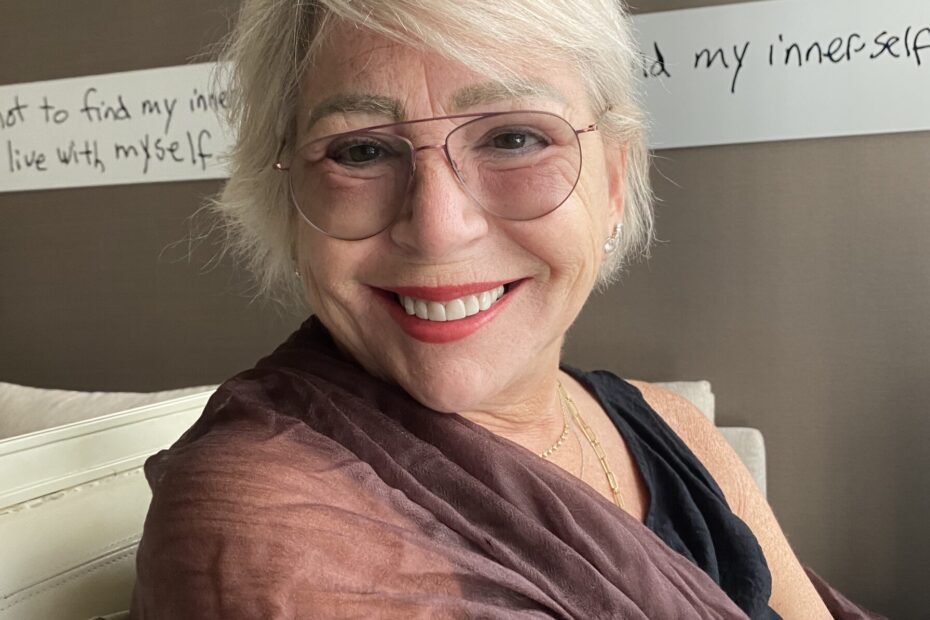Nine years later, she’s sharing her secrets to her successful ‘dance’ with cancer.
A year after finishing treatment for breast cancer and being told she was cancer-free, a scan revealed Lindsay McDonell had tumors all over her body. Her doctors predicted she had three months to put her affairs in order. She took trips around the world for groundbreaking treatments and —seven years later—is sharing practical ways to live better longer with terminal cancer.
Lindsay McDonell, a dynamic mother of three, went into her mammogram screening with apprehension over a lump that had formed after breast reduction surgery. In that mammogram, and the three subsequent diagnostic mammograms, she was reassured that it was just scar tissue from her breast reduction surgery. Finally, after pushing her doctor for a biopsy, the tissue came back as malignant: Lindsay had breast cancer.
She underwent neoadjuvant chemotherapy treatment to shrink the tumor before surgery with a regimen of AC-T (Adriamycin, cyclophosphamide, and Taxol). Then, she went under the knife for a double mastectomy. Unfortunately, in a surgical mishap, she woke up with humongous implants and the news that they did not get good margins. Radiating her new, wrong implants was the next step. The 28 radiation treatments were horrible, tightening and burning her skin. After the radiation, she was prescribed Arimidex because the cancer was estrogen receptor positive. This means that by taking an estrogen inhibitor like Arimidex, her body would hypothetically stop feeding the cancer. Finally, after the chemo, surgery, surgical mishaps, radiation, and medications, she received a “free and clear” prognosis from her doctors.
Over the next few years, her life changed drastically. From “free and clear” to recurrence, her health and her hair came and went. She had metastases all over her body, including most of her organs, her bones, and her skull. Her oncologist-turned-friend Dr. Regina Stein encouraged Lindsay and her resilience, taking consistent blood tests and full-body CAT scans, MRIs, and bone scans to detect cancer progression. They worked together to find a cocktail of medications to treat Lindsay’s full-body metastasis with letrozole and Ibrance. Then, Lindsay got the news that the drugs failed and she had progression and it was time for plan B. She went off letrozole and Ibrance and started capecitabine. At this point, surgery wasn’t an option, so in the event that capecitabine didn’t work, Lindsay needed a plan C.
After hearing of Dr. Kleef’s innovative hyperthermic treatments from the Annie Appleseed Conference in Florida and speaking to Dr. Moss, a skilled cancer consultant, Lindsay visited Dr. Kleef Medical Center in Austria—now in Budapest. In their first visit, Dr. Kleef gave her the unexpected news that he didn’t think he’d be able to treat her. From her diagnostic reports, he suspected she had swelling in the brain, making hyperthermia an incompatible treatment method. Lindsay hadn’t come all this way for nothing, so she asked them to confirm whether or not there was actual brain swelling. The test indicated there was no brain swelling, so she would be eligible for the treatment. This final push of advocacy helped Lindsay get the treatment she came for, and what she would ultimately attribute to her survival.
She spent three months undergoing a combination of four different types of hyperthermia. These treatments involved heating the body to 104.5° F to stimulate the body’s own immune response; and intravenous high-dose vitamin C, alpha-lipoic acid, fractionated immunotherapy, and fractionated chemotherapy treatment of topotecan. The type of chemotherapy chosen was based on a chemosensitivity test done in Dusseldorf, Germany, which tested which chemotherapies or nutraceuticals had the best chance of stopping Lindsay’s particular cancer progression. This means that the chemotherapy chosen for her treatment was personalized, making sure that her tumors were responsive before undergoing treatment, increasing the chance that her body would respond well to the chemo. Two weeks of this three-month process were spent in continuous whole-body hyperthermia with the inclusion of IL-2 (interleukin-2) to maintain her fever for five days straight. She went through this entire process in Austria five separate times, and after each of these treatments, the tumor markers in her blood came down. Many people undergoing similar treatments did not see good results, and Lindsay considers herself lucky.
About two years later, with more metastases in her bones, Lindsay consulted with Dr. Rosenberg in Boca Raton. He referred her to Dr. Jason Williams at the Williams Cancer Institute in Mexico City for a fairly new treatment. She received injections of Anti-OX40 and Yervoy, immunotherapy drugs, directly into several tumors to stimulate her immune system.
The combination of the continued topotecan, hyperthermia, and immunotherapy kept Lindsay at a place where it seemed she was stable for at least some time.
Each of these treatments is highly personalized and not covered by insurance, so Lindsay paid about $40,000 out-of-pocket for each of the five treatments with Dr. Kleef and $80,000 for her treatment with Dr. Williams. Although these treatments are very cost prohibitive, they prove the efficacy of working outside of the conventional U.S. cancer treatment regimen. As these treatments become more proven, the FDA had begun incorporating them into medicine in the U.S. and are beginning to offer coverage for things such as some immunotherapies.
Then, she had another recurrence. At this point, they did a liver biopsy and sent it for a Tempus test which showed there was BRCA 2 mutation in her tumors. This was the first she had heard of a BRCA 2 mutation in her cancer journey. After her initial diagnosis, her blood was tested for a BRCA 2 mutation and came back negative. But not her tumors. This is called a somatic mutation where the cells mutate locally, instead of a germline mutation which is systemic. The detection of the BRCA 2 mutation open up new treatment for her. She started Lynparza, a PARP inhibitor, to target those mutations.
Soon after, her white blood cells started going through the roof. After a bone marrow biopsy, the found that she had developed CML, chronic myeloid leukemia. In response to that, she started taking SPRYCEL, which brought the CML down to an undetectable level. It also seemed to work very well in conjunction with Lynparza, as she has been stable for three years.
Currently, Lindsay has regular scans every six months and bloodwork done every month. During the bloodwork, she has a Fulvestrant injection. Now, in coexistence with a body full of cancer, she is living a beautiful life.
“The idea of constant battling and the possibility of someone saying ‘She lost her battle with cancer’ struck me as the worst yet the most common way to look at this. It was exhausting. I realized I had to find a different solution. And I realized that really what I was doing was ‘dancing’ with cancer. My cancer is terminal. In theory, I will never be rid of it. But if I’m in this for the long term, I have to accept my cancer. Sometimes it progresses, sometimes it recedes, and most of the time, it’s fairly stable. By not looking at it with animosity and by looking at it with curiosity instead, I allow myself to not be crushed by fear. From that place, I am able to be more creative to find solutions as to what the newest steps might be calling for.”
This message of working with instead of against cancer is counterintuitive to most. However, Lindsay found it to be the cornerstone of her methods of dealing with cancer. There is plenty of research on how mindset affects outcomes for people with chronic or terminal illness, and Lindsay is no exception. What’s special about Lindsay’s message is that it empowers people to have hope and take realistic steps to protect their own survival—even if it doesn’t mean remission.
As a nine-year thriver, she now works as a cancer coach with a host of certifications. She also wrote a book packed with 100 pages of her story followed by 200 more of tips and resources. To learn more about what resources Lindsay recommends, you can visit her Facebook page, Your Dance With Cancer.

